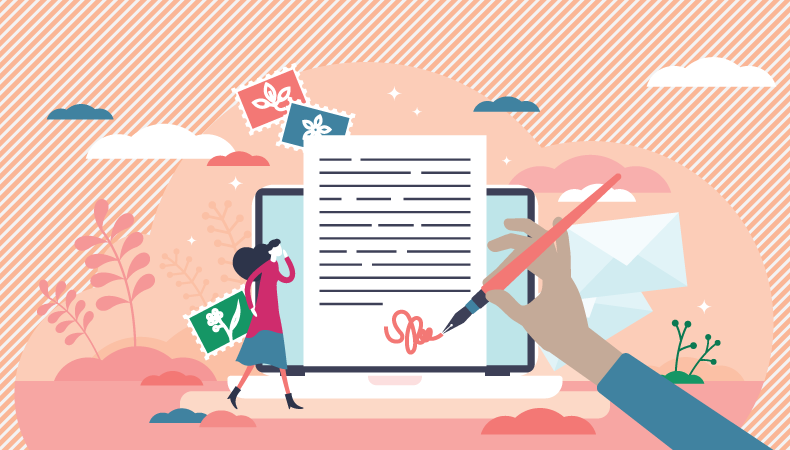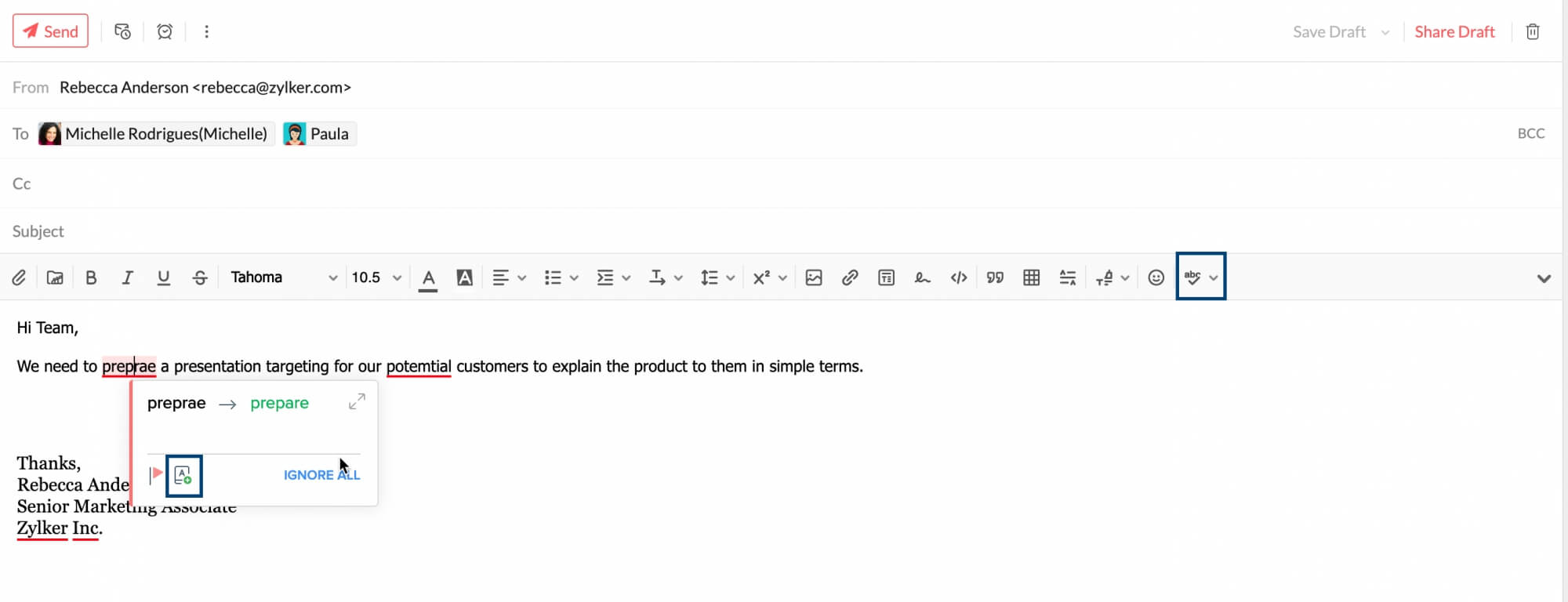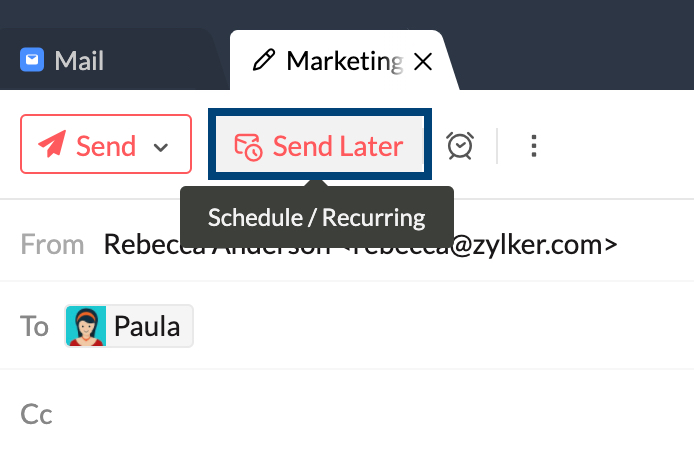How to write an effective formal email
Even though there are multiple communication modes, email is still considered the most reliable and formal mode of communication. Unlike social media platforms or chat applications, email is universal. This makes email one of the most preferred communication tools for work. With more organizations adapting to hybrid mode, where some employees work from distributed remote offices and some of the employees work from their homes, email conversations have increased manifold. While chat, comments in team collaboration software can be to the point and a bit informal, business email is still considered formal and elaborate. It is also one of the most important asynchronous modes of communication. The recipients can receive the email, read it, understand it and then respond to the email.

A well-drafted email with a neat structure provides the reader an understanding of what you are trying to convey and the details that they need to respond with. While writing an email is an art, it can be perfected with practice. Some of the best practices in drafting a perfect email - the one that the recipient doesn't miss among the heap - are listed below:
- Use a professional email address
- Have a simple and clear subject
- Begin with a positive greeting
- State the background
- Provide the purpose in a crux
- Mention the CTA
- Add closing remarks
- Use professional signatures
- Run a spelling/ grammar/ sanity check
- Use CC/ Bcc wisely
- Format your email consistently
- Schedule your email
- Set up reminders for follow-ups
1. Use a professional email address
Imagine that you are a hiring manager and you receive the following two emails -
From: cute_dog_lover@hmail.com &
From: email_sebastian@hmail.com
Which email are you more likely to open and read and which person would you consider hiring? Obviously the second person, given that all other parameters are the same. Ensure that you send non-personal emails from a professional email address. Whether you are applying for a new position or just contacting a support team to get your questions answered, the email address you use helps you gain the trust of a new recipient.
It is highly recommended to use a custom domain-based email address while sending official communication or sending emails to your business contacts. However, if you do not have one, ensure that your email address is professional, with your name or with your business name.
2. Have a simple and clear subject
The Email Subject is the first thing that anyone reads (sees?) in any email and is often one of the factors that influence the recipient to open and read the emails. Whatever is said, most of the readers 'judge' the email by the 'Subject' line.
In fact, a lot of recipients decide whether to open an email or not, based on the subject - when they receive emails from non-contacts or strangers. It is the most precise content of the email, and most business relationships have begun with great subject lines. Your subject line should be a small summary of the email and can also set an expectation on the call to action needed from the email. In short, your subject should be able to pull the attention of the recipient, enough to click on the email and read it.
Examples:
Subject: Quarterly revenue report | Includes analysis
Subject: Our meeting @ <event> | Let's catch up!
Subject: Request your presence at <event>
3. Begin with a positive greeting
Start the email with a positive note. Provide a relevant greeting for the recipient, based on the region they are from, the time of the year they receive this email, or just a simple 'Good day from...'.
When the email turns into an email thread or conversations with a lot of to & fro replies, you can drop the greeting. However, when you are emailing someone for the first time, the greeting gives a positive vibe to the reader and you can be assured of a response in a positive tone.
Examples:
Thanks for the great insights about <discussion topic> at <event name>
It was a pleasure meeting you at <>.
4. State the background
If you are emailing someone for the first time, introduce yourself, and state the background of the email. You need to state how you know the recipient, and why you are emailing the person. For example, when you are emailing someone you met at an event or emailing a contact introduced by a friend, be sure to mention the event name or your friend's name along with the details on how you know the recipient.
Examples:
It was great discussing with you about <>.
I am emailing you to take <> forward.
I am reaching to you about <>.
5. Provide the purpose in a crux
This is the main part of the email where you mention the core content or purpose of the email. Ensure that you write the core email content in clear short sentences. Avoid unwanted jargon, or too technical/industry-specific terms in the very first email, when you are not sure about the recipient's knowledge in those areas. If you are reaching out, based on research or if someone has recommended this contact, make sure you mention that in the email. This will help the reader understand the context of the email better. If you have a lot to say, it would be better to communicate the main and important items in the first email and save the rest for later.
Too long emails might be skipped and you might not get the much-needed response from the other person.
6. Mention the CTA
Every email is essentially a task list for someone. It either expects a response with some details or action from the recipient. In some cases, the recipient might have to connect you with someone who can act on the email. In any case, mention the action expected from the recipient clearly in the email. This should be immediately after the core email where you state the purpose of the email.
Examples:
Reply to the email with the following details.
Can we meet for a coffee and discuss further.
Let me know a suitable time and contact details, to schedule a call regarding this.
7. Add closing remarks
In addition to the CTA, add closing remarks to give that finishing touch to your email. Use simple sentences as in the sample below, without being too pushy.
Examples:
'Waiting for your positive response, to take it further'.
'Looking forward to work with you on this'.
'Feel free to call me on ######, if you need more details'.
8. Use professional signatures
Do not forget to add a professional signature to the end of your email. Your signature helps you to establish your authenticity, your role, your brand, along with the required contact information.
When you are emailing someone for the first time, use an email signature that specifies your full name, your role, and the company or brand you are associated with. Additionally, you can include your company's website and links to social media handles. However, make sure that you use simple signatures when the email turns into a long conversation - or configure a simpler signature for replies/ forwards.
Sign off the email with a 'Sincerely' or 'Regards' or 'Best regards'
If you are sending an internal email, you can include your department and role, but skip the company website and social media handles. You can save 2 or 3 signature templates and include the relevant ones in the emails you send.
Examples:
Regards,
Rebecca Thomson,
Marketing Manager,
Zylker Inc.
Sincerely,
Rebecca Thomson
Ph: +1 234 234 2345
Email: rebecca@zylker.com
Website: www.zylker.com
9. Run a spelling/ grammar/ sanity check
Once you have completed writing your email, read the email again from the recipient's perspective and ensure that it makes sense. Add attachments, if required. Use a spelling/ grammar check to give the email a quick spelling/ grammar/ phrasing check. You might be surprised at how even experts benefit from the spell checks and sanity checks in their emails. Make sure that you spot the error due to commonly confused words, which can also cause embarrassing errors in the email. 
10. Use CC/ Bcc wisely
You can include other relevant contacts in the email cc/ bcc to have them in the loop. For example, when you send an email to someone, who has been introduced by another common friend, it is good to copy that common friend in the cc of the email, thank him/ her for the introduction, and continue the email.
In general, it is not a good practice to Bcc someone without the actual recipient knowing unless you think that future conversations are irrelevant for them. In some cases, you may need to add a compliance email address in BCC to archive the emails separately.
11. Format your email consistently
A poorly formatted email not only puts the sender in poor light but also affects the readability of the email. Ensure that your email is of consistent font face and font family. Use a 'professional' and 'readable' font for your emails. You can use 'Bold' or 'Underline' formatting to highlight portions of email content. Most of the email services provide 'Rich text editors' with multiple formatting options. In some cases, using tables in emails can help reduce a lot of unwanted bloated content in the email. 
To ensure that you can choose 'presets' for the default font family and size, which matches your signature settings. By this, you can be assured that your emails are neatly formatted and presented to the recipients.
12. Schedule your email
If you're a night owl or work with people across timezones, the scheduling feature in your email will make sure that your email reaches the recipients at the right time and catches their attention. Though people wake up to their emails, it is mainly to scan if there's something urgent or too important that's waiting for them. Most people respond to emails only later, when they get to their work tables. Hence scheduling an email to reach the recipient during their peak work hours enhances the chance of them responding immediately. 
Do a little homework to check the timezone of the recipient and schedule the email to be sent at the right time, that matches the recipient's location and timezone.
13. Set up reminders for follow-ups
Even after all hard work, the recipient might have read the email and missed it or sometimes even missed reading your email. So set up reminders for the emails, to notify you when there's no response from the recipient within a day or two of sending the email.
A genuine follow-up email, reminding the recipient might sometimes work wonders. A lot of people who miss the first email or intentionally ignore them, often respond to the follow-up email in the same conversation instead of a new email on the same topic. The follow-up email can be simple and to the point. 
Example:
Hey there!
Did you get a chance to revisit my previous email? Please let me know if you require any further information to take this forward.
Email communication is essential to establishing contacts and building relationships. Writing an email can be a breeze when you ensure that you keep it simple, to the point, and follow the email etiquette rules.
Top Articles